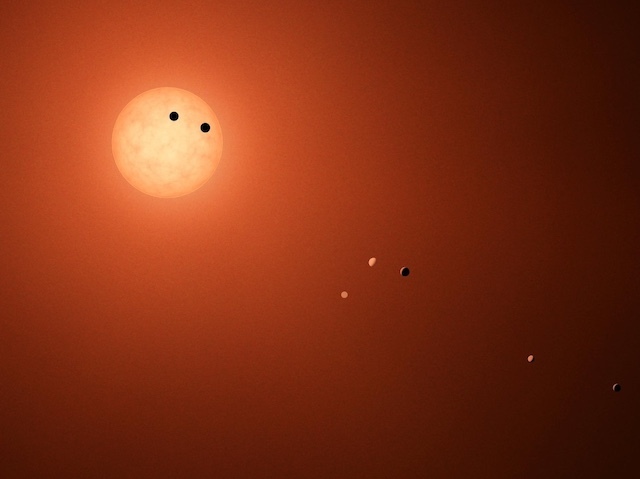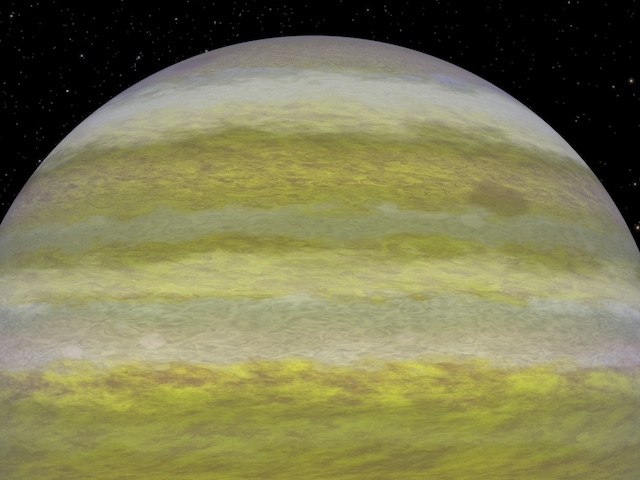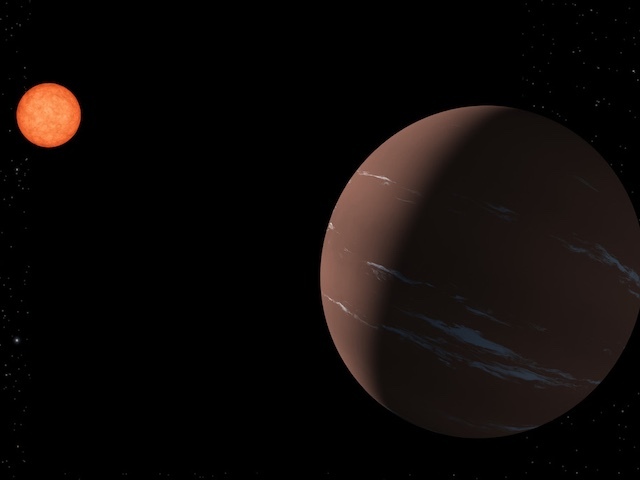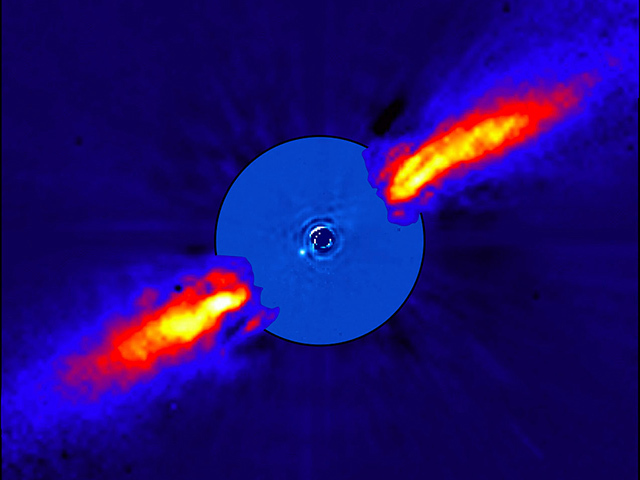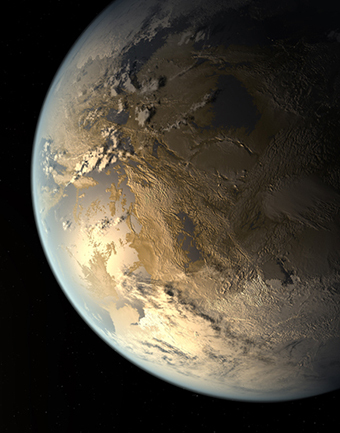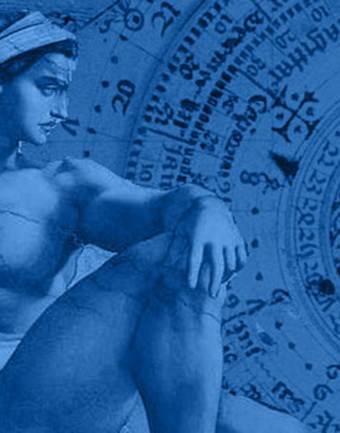News | October 1, 2019
TESS Spots a Star-shredding Black Hole
For the first time, NASA’s planet-hunting Transiting Exoplanet Survey Satellite (TESS) watched a black hole tear apart a star in a cataclysmic phenomenon called a tidal disruption event. Follow-up observations by NASA’s Neil Gehrels Swift Observatory and other facilities have produced the most detailed look yet at the early moments of one of these star-destroying occurrences.
“TESS data let us see exactly when this destructive event, named ASASSN-19bt, started to get brighter, which we’ve never been able to do before,” said Thomas Holoien, a Carnegie Fellow at the Carnegie Observatories in Pasadena, California. “Because we identified the tidal disruption quickly with the ground-based All-Sky Automated Survey for Supernovae (ASAS-SN), we were able to trigger multiwavelength follow-up observations in the first few days. The early data will be incredibly helpful for modeling the physics of these outbursts.”
A paper describing the findings, led by Holoien, was published in the Sept. 27, 2019, issue of The Astrophysical Journal and is now available online.
ASAS-SN, a worldwide network of 20 robotic telescopes headquartered at Ohio State University (OSU) in Columbus, discovered the event on Jan. 29. Holoien was working at the Las Campanas Observatory in Chile when he received the alert from the project’s South Africa instrument. Holoien quickly trained two Las Campanas telescopes on ASASSN-19bt and then requested follow-up observations by Swift, ESA’s (European Space Agency’s) XMM-Newton and ground-based 1-meter telescopes in the global Las Cumbres Observatory network.
TESS, however, didn’t need a call to action because it was already looking at the same area. The planet hunter monitors large swaths of the sky, called sectors, for 27 days at a time. This lengthy view allows TESS to observe transits, periodic dips in a star’s brightness that may indicate orbiting planets.
ASAS-SN began spending more time looking at TESS sectors when the satellite started science operations in July 2018. Astronomers anticipated TESS could catch the earliest light from short-lived stellar outbursts, including supernovae and tidal disruptions. TESS first saw ASASSN-19bt on Jan. 21, over a week before the event was bright enough for ASAS-SN to detect it. However, the satellite only transmits data to Earth every two weeks, and once received they must be processed at NASA’s Ames Research Center in Silicon Valley, California. So the first TESS data on the tidal disruption were not available until March 13. This is why obtaining early follow-up observations of these events depends on coordination by ground-based surveys like ASAS-SN.
Fortunately, the disruption also occurred in TESS’s southern continuous viewing zone, which was always in sight of one of the satellite’s four cameras. (TESS shifted to monitoring the northern sky at the end of July.) ASASSN-19bt’s location allowed Holoien and his colleagues to follow the event across several sectors. If it had occurred outside this zone, TESS might have missed the beginning of the outburst.
“The early TESS data allow us to see light very close to the black hole, much closer than we’ve been able to see before,” said Patrick Vallely, a co-author and National Science Foundation Graduate Research Fellow at OSU. “They also show us that ASASSN-19bt’s rise in brightness was very smooth, which helps us tell that the event was a tidal disruption and not another type of outburst, like from the center of a galaxy or a supernova.”
Holoien’s team used UV data from Swift — the earliest yet seen from a tidal disruption — to determine that the temperature dropped by about 50%, from around 71,500 to 35,500 degrees Fahrenheit (40,000 to 20,000 degrees Celsius), over a few days. It’s the first time such an early temperature decrease has been seen in a tidal disruption before, although a few theories have predicted it, Holoien said.
More typical for these kinds of events was the low level of X-ray emission seen by both Swift and XMM-Newton. Scientists don’t fully understand why tidal disruptions produce so much UV emission and so few X-rays.
“People have suggested multiple theories — perhaps the light bounces through the newly created debris and loses energy, or maybe the disk forms further from the black hole than we originally thought and the light isn’t so affected by the object’s extreme gravity,” said S. Bradley Cenko, Swift’s principal investigator at NASA’s Goddard Space Flight Center in Greenbelt, Maryland. “More early-time observations of these events may help us answer some of these lingering questions.”
Astronomers think the supermassive black hole that generated ASASSN-19bt weighs around 6 million times the Sun’s mass. It sits at the center of a galaxy called 2MASX J07001137-6602251 located around 375 million light-years away in the constellation Volans. The destroyed star may have been similar in size to our Sun.
Tidal disruptions are incredibly rare, occurring once every 10,000 to 100,000 years in a galaxy the size of our own Milky Way. Supernovae, by comparison, happen every 100 years or so. In total, astronomers have observed only about 40 tidal disruptions so far, and scientists predicted TESS would see only one or two in its initial two-year mission.
“For TESS to observe ASASSN-19bt so early in its tenure, and in the continuous viewing zone where we could watch it for so long, is really quite extraordinary,” said Padi Boyd, the TESS project scientist at Goddard. “Future collaborations with observatories around the world and in orbit will help us learn even more about the different outbursts that light up the cosmos.”
TESS is a NASA Astrophysics Explorer mission led and operated by MIT in Cambridge, Massachusetts, and managed by NASA's Goddard Space Flight Center. Additional partners include Northrop Grumman, based in Falls Church, Virginia; NASA’s Ames Research Center in California’s Silicon Valley; the Harvard-Smithsonian Center for Astrophysics in Cambridge, Massachusetts; MIT’s Lincoln Laboratory; and the Space Telescope Science Institute in Baltimore. More than a dozen universities, research institutes and observatories worldwide are participants in the mission.
NASA's Goddard Space Flight Center manages the Swift mission in collaboration with Penn State in University Park, the Los Alamos National Laboratory in New Mexico and Northrop Grumman Innovation Systems in Dulles, Virginia. Other partners include the University of Leicester and Mullard Space Science Laboratory of the University College London in the United Kingdom, Brera Observatory and ASI.
Press Contacts
Claire Andreoli
claire.andreoli@nasa.gov, (301) 286-1940
NASA’s Goddard Space Flight Center, Greenbelt, Md.
Natasha Metzler
nmetzler@carnegiescience.edu, (202) 939-1142
Carnegie Institution, Strategic Communications
Laura Arenschield
Arenschield.2@osu.edu
The Ohio State University, Research Communications


